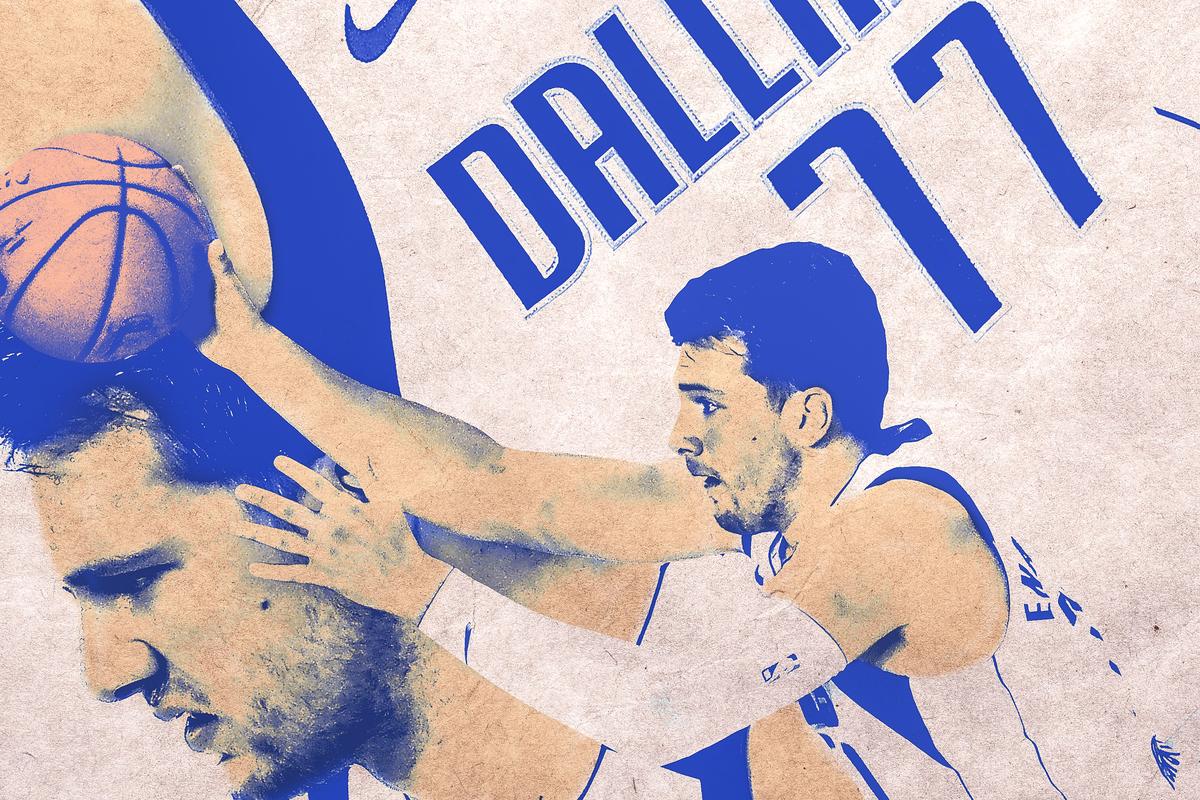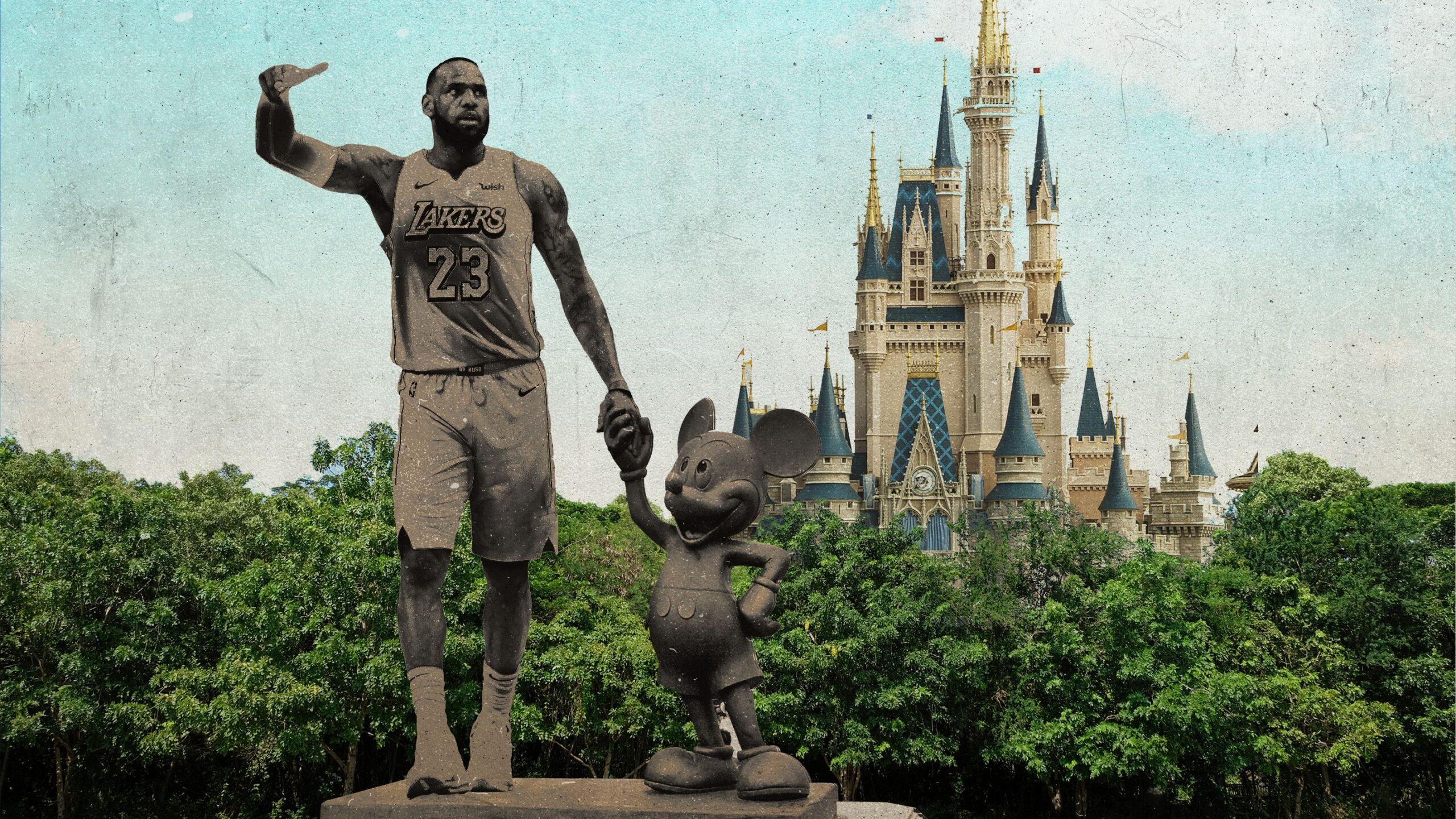
Luka Doncic committed four turnovers in the first two minutes of Game 1 against the Clippers on Monday. That was all the adjustment period he needed to get acclimated to the NBA playoffs. Los Angeles was supposed to be the ultimate test for the second-year MVP candidate. The Clips defense is built around the type of long and athletic wings (Kawhi Leonard and Paul George) that don’t exist in the EuroLeague.
Doncic wasn’t perfect in his first taste of the postseason. He finished with 11 turnovers (as many as the Clippers) and couldn’t make enough plays down the stretch, a familiar problem for Dallas, to avoid a 118-110 loss. But Doncic still had the highest-scoring playoff debut in NBA history (42 points on 21 shots) while chipping in seven rebounds and nine assists.
It just doesn’t matter who is guarding him. He’s too big, too skilled, and too smart to be contained by one player. Doncic, at 6-foot-7 and 220 pounds, is just as strong as Kawhi and George. His most impressive play of the night came when he was isolated against Leonard at the top of the key with two minutes left in the fourth quarter. How many other point guards could send the two-time Finals MVP flying across the lane with just a nudge of their shoulders?
Doncic’s power is one of the most underrated parts of his game. Patrick Beverley, a former first-team All Defense point guard, initially got the assignment on the Mavericks star. But there’s not much that someone as small as Beverley (6-foot-1 and 185 pounds) can do to bother him. Doncic repeatedly blasted through him on his way to the rim:
He can score on anyone. But what makes Doncic special is that he doesn’t have to. The 21-year-old has clearly read from the LeBron James postseason playbook. He always tries to find the weak link in the opposing defense. Almost half of his offensive possessions against the Clippers (48.7 percent) came as the ball handler in the pick-and-roll. Not only is he at his best when attacking a scrambling defense, but those plays also allow him to pick and choose exactly who he wants to attack.
His primary victim in Game 1 was Clippers starting center Ivica Zubac. Doncic knew that he could always create an open shot for himself or his teammates when he drove at the lumbering 7-footer. Even when Los Angeles rotated over to stop the initial drive, it was only a matter of time before Dallas, which had the best offense in NBA history in the regular season, found the open man:
Clippers coach Doc Rivers had no choice but to bench Zubac, playing him only 22 minutes and not putting him back in the game after the halfway mark of the third quarter.
But all that did was give Doncic someone else to target. The Clippers switched almost every perimeter screen to prevent him from getting too much room on his drives. So Doncic just probed and probed until he found a matchup that he liked. If he couldn’t attack slower big men, he had his way with smaller guards, like Reggie Jackson:
Doncic is almost matchup-proof. He can attack any defender from any spot on the floor. It doesn’t matter if his shot is off on a given night because he can always get to the free throw line. There’s a reason he’s so often compared to James Harden. He shot 14-of-15 from the foul line in Game 1, scoring one fewer point than the entire Clippers team (15-of-20) from the stripe. He’s not afraid to chase fouls and call out officials if they don’t give him a friendly whistle. The irony of Kristaps Porzingis’s ejection in Game 1 is that Doncic lobbies the officials far more often than his costar. He even admitted that he does it too much earlier this season. How often Doncic gets to the line will be heavily litigated not only in this series—but over the rest of his career.
Dallas puts defenses in impossible positions. Every player in its rotation is a knockdown shooter. Doncic can dictate any matchup that he wants, and the defense can’t send help without creating an open shot for someone else at the 3-point line. Once that happens, he has the size and vision to make any pass in the book:
The only counter an opposing defense has is to try to give Doncic as few mismatches as possible. Los Angeles eventually downsized to lineups with Marcus Morris, a 6-foot-8, 230-pound combo forward, at center. They closed the game with a lineup they hadn’t used all season, playing three wings (Morris, Leonard, and George) and two guards (Beverley and Williams).
The Clippers need Montrezl Harrell, who missed the seeding games while mourning the loss of his grandmother, back at 100 percent. He was rusty in Game 1, with only six points and two rebounds in 15 minutes. Harrell isn’t an elite defender, but he has the right combination of size (6-foot-7 and 240 pounds) and speed to not get overwhelmed by Doncic. Playing Leonard, George, Morris, and Harrell together is the closest thing to a Doncic-proof lineup that exists in the NBA. But even that isn’t enough. The Clippers don’t have five defenders with the physical tools to go against Doncic. And he needs only one weak link to attack.
The Clips’ best chance to slow Doncic down is to use his own playbook against him. The Mavs hide Doncic as much as possible on defense. But there’s no hiding him if his man screens for the ball. George (27 points) made a killing on Monday when he got Doncic switched onto him. The Mavs star just doesn’t have the foot speed to contest George’s jumper and stay in front of him:
Doncic doesn’t want to get banged around fighting through screens and chasing shooters around the court, either. Getting into his legs and forcing him to work on defense should make it harder for him to dominate on the other end of the floor.
That’s where his youth comes into play. He still lets his offense impact his defense. Maybe the biggest play in Game 1 came with a little over two minutes left in the fourth quarter. It started when Seth Curry took a quick transition 3 before Doncic could touch the ball. The Clippers walked the ball up the court, but Doncic was so mad that he never found his man, allowing him to knock down an open 3:
Doncic has supreme confidence in himself, which can be both a gift and a curse. He always wants the ball because he’s so confident that he can make the right play. It’s hard to argue given the amount of success that he has had in his young career. Doncic trusts his teammates to make open shots once he finds them. But he’s still learning to trust them to make their own decisions.
He’s the most ball-dominant player in the NBA. This is the leaderboard in touches and time of possession in the bubble (entering Wednesday’s action):
Bubble Touches
Harden has a reputation as someone who holds the ball the entire game and doesn’t allow anyone else to get into a rhythm. But the difference between Doncic and Harden on that list (21.6 touches per game) is as wide as the gap between Harden and the 31st-ranked player on that list, Dejounte Murray.
Part of that difference can be explained by the way the Mavs are constructed. They built a team of spot-up shooters who could play off of Doncic. Porzingis isn’t Russell Westbrook. He’s the perfect second option next to Doncic because he can score in bunches without needing to hold the ball.
But just because Porzingis can do that doesn’t necessarily mean it’s best for the Mavericks. Doncic should empower his costar by giving up the ball. A defense designed to slow Doncic down will have a tough time against the 7-foot-3 Porzingis, and vice versa. If the Clippers use a smaller frontcourt of Morris and Harrell to switch screens on Doncic, that leaves them with no one big enough to bother Porzingis.
Porzingis didn’t make a huge impact on Game 1 even before his controversial ejection, finishing with 14 points on 3-of-9 shooting in 20 minutes. The Mavs will need both of their stars to dominate if they are going to upset the Clippers. Running some of the offense through Porzingis would make that easier for both of them.
The next step in Doncic’s development is improving his outside shot. He shot only 31.6 percent from 3 on 8.9 attempts per game this season. He takes too many difficult ones. Doncic averaged 1.3 catch-and-shoot 3s per game this season compared to 7.4 off-the-dribble 3s. Letting other players create shots for him would boost his percentages while also diversifying the Mavs’ offense.
Their offense has collapsed down the stretch of games this season. Dallas has the no. 26 offensive rating in the NBA (99.2) when the score is within five in the last five minutes. It’s not that Doncic isn’t clutch. He already has a long list of last-minute shots on his NBA résumé. But it’s hard to carry that much of an offensive workload for the entire game without eventually wearing down, especially when the defense can load up to stop you in the final moments.
The hardest lesson to learn in the postseason for a young superstar like Doncic is that more isn’t always better. The key to winning in the NBA playoffs is doing more with less.


